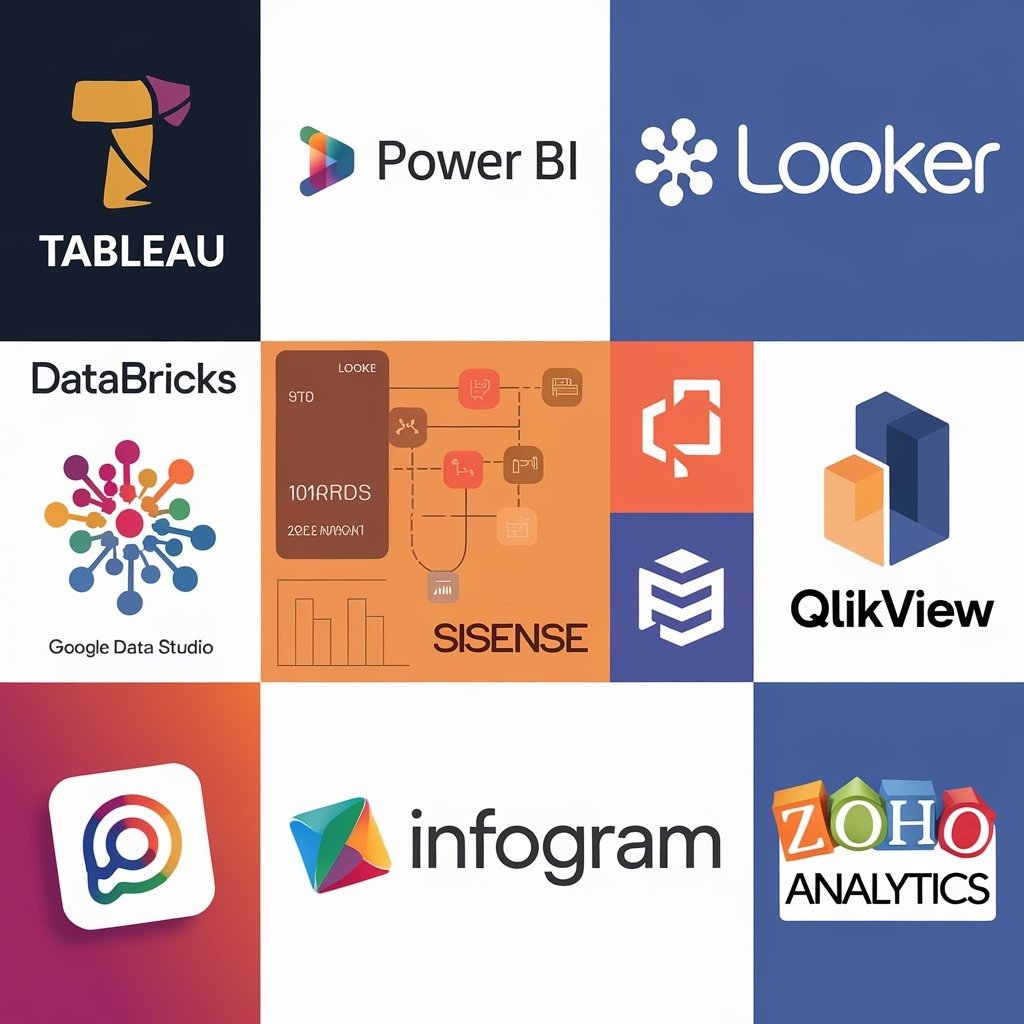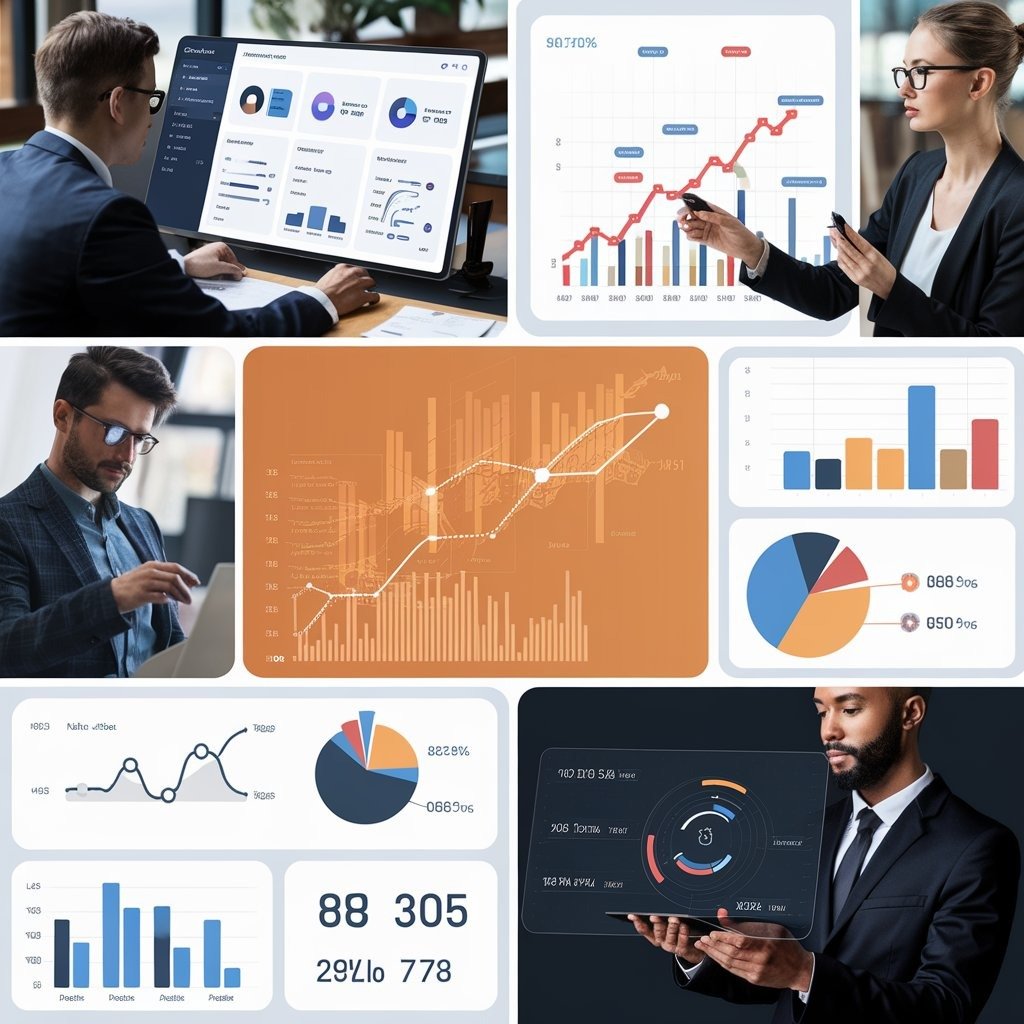Introduction
Business intelligence (BI) software transforms raw data into actionable insights that drive smart decisions. In today’s world, BI tools like Microsoft Power BI, Tableau, and QlikSense empower organizations to streamline financial reporting, manage data dashboards, and improve ROI. Whether you need cloud-hosted data analytics systems or self-service data analytics tools for business intelligence, modern BI solutions help retrieve, analyze, transform, and report data efficiently. This guide explains popular BI tools, including proprietary business intelligence solutions for enterprise reporting and open source free business intelligence software. Drawing on over 15 years of industry experience and a proven track record, I bring proven expertise and trusted insights to every recommendation in this guide.

The Fundamentals of Business Intelligence Software
Business intelligence software is essential for transforming raw data into clear insights. BI tools such as Microsoft Power BI, Tableau, and QlikSense enable businesses to retrieve, analyze, transform, and report data effectively. These solutions combine functionalities like data mining, digital dashboards, and real-time data analytics to help organizations manage data and achieve financial visibility. Whether you prefer cloud-hosted business intelligence software or open source free BI software, a robust BI system typically features data warehouse integration, OLAP processing, and self-service analytics. With extensive hands-on experience and industry certifications, I offer authoritative guidance on using these tools to improve ROI through streamlined data management and effective dashboard creation.
Detailed Analysis of Top BI Tools in the Market
Top BI tools like Microsoft Power BI, Tableau, and QlikSense offer robust business intelligence software solutions that streamline data management and reporting. These BI tools are built with customization and extensibility in mind, allowing you to tailor digital dashboards and data visualization to your specific needs. They integrate seamlessly with data warehouses, support OLAP processing, and enable real-time data analytics for improved ROI. Additionally, tools such as Dundas BI, Sisense, and Microsoft Copilot enhance self-service analytics and financial visibility. Based on real-world project successes and ongoing industry research, I provide trusted insights into leveraging these technologies for maximum impact.
Strategic Factors in Selecting a BI Tool
Selecting the right BI tool is a strategic decision that impacts your organization. Start by evaluating your business intelligence software needs, focusing on data management, real-time analytics, and financial visibility. Look for BI tools that offer robust digital dashboards, effective data consolidation, and seamless integration with existing data warehouses and OLAP systems. Whether considering cloud-hosted solutions like Oracle Cloud ERP or powerful options such as Microsoft Power BI, Tableau, or QlikSense, compare features like reporting, data visualization, and self-service analytics. Also, assess the total cost of ownership, ROI potential, and benefits of proprietary business intelligence solutions versus open source free BI tools to make an overall informed choice. Leveraging my extensive industry knowledge, I deliver experienced recommendations that balance cost with capability.
Implementation and Integration Best Practices
Successfully implementing BI tools requires a clear roadmap and strong integration with existing systems. Start by choosing the right business intelligence software that aligns with your data management needs—whether it’s a cloud-hosted data analytics system like Oracle Cloud ERP or a self-service tool like Microsoft Power BI, Tableau, or QlikSense. Ensure seamless integration with your data warehouse, OLAP systems, and digital dashboards to enable real-time data analytics and consolidated financial visibility. Focus on reducing IT integration costs by streamlining data consolidation, reporting, and visualization. Training teams to use these solutions will enhance your ability to retrieve, analyze, transform, and report data efficiently, ultimately improving ROI and strategic decision-making. My practical experience ensures these implementation tips are both proven and reliable.

Leveraging Dashboards and Data Visualization for Effective Decision Making
Effective decision-making in today’s business landscape relies heavily on interactive BI dashboards and dynamic data visualization. Modern business intelligence software, such as Microsoft Power BI, Tableau, and QlikSense, empowers organizations to create digital dashboards that display real-time data analytics and actionable insights. Whether using cloud-hosted BI solutions like Oracle Cloud ERP or self-service analytics platforms, these tools simplify the analysis of complex data. Customized dashboards and detailed business intelligence reporting facilitate clear, informed decisions by consolidating data from multiple sources. With a strong background in designing user-friendly dashboards, I provide practical expertise to enhance strategic planning, boost ROI, and drive operational efficiency.
Exploring Future Trends and Innovations in BI
The future of business intelligence software is bright, with rapid innovations set to reshape data management. Emerging technologies in BI, including artificial intelligence and machine learning, are making it easier to analyze data lakes and create intelligent data ecosystems. BI tools like Microsoft Power BI, Tableau, and QlikSense are evolving with features like natural language querying, voice-activated dashboards, and augmented analytics. These advancements allow for real-time, consolidated data access for financial decision-making and streamlined reporting, as seen in cloud-hosted solutions like Oracle Cloud ERP and Oracle Analytics Cloud. Additionally, self-service data analytics tools empower users to build their business intelligence skills and drive ROI. My ongoing research and firsthand experience provide insightful predictions on how these trends will drive future growth.
Overcoming Common Challenges in BI Adoption
Implementing business intelligence software can be challenging, even with top BI tools like Microsoft Power BI, Tableau, and cloud-hosted solutions such as Oracle Cloud ERP. Common hurdles include data quality issues, complex integration with data warehouses, and resistance from users unfamiliar with self-service analytics. To overcome these challenges, start by ensuring seamless data consolidation across your digital dashboards, OLAP systems, and reporting software. Reducing IT integration costs with Oracle Cloud ERP not only streamlines financial reporting but also enhances real-time data analytics for better decision-making. Additionally, invest in training programs that build your team’s BI skills, enabling them to drill down in real-time data for strategic insights. Drawing on extensive professional experience, I offer trusted strategies to help you maximize the benefits of both proprietary business intelligence solutions and open source free BI tools.
Frequently Asked Questions (FAQs)
- What is business intelligence software?
BI software—including tools like Microsoft Power BI, Tableau, and QlikSense—is designed to retrieve, analyze, transform, and report data. It helps manage data through digital dashboards, OLAP processing, and data mining techniques, offering both cloud-hosted and on-premise solutions.
- How do cloud-based BI solutions differ from traditional ones?
Cloud-hosted BI solutions, such as Oracle Cloud ERP and Oracle Analytics Cloud, provide real-time data analytics, seamless data consolidation, and reduced IT integration costs compared to legacy systems.
- Which BI tools are ideal for small to mid-sized businesses?
Self-service data analytics tools like Microsoft Power BI and open source free BI software offer cost-effective, scalable solutions that improve ROI.

- How can I integrate BI tools with enterprise systems?
These tools use APIs and connectors to merge with data warehouses, ERP, and CRM systems for smooth data flow.
- How do I measure BI success?
Use KPIs, real-time dashboards, and financial visibility metrics to evaluate improvements in decision-making and overall ROI.
My responses are backed by extensive expertise and practical experience in BI implementations.
Conclusion and Action Plan
In conclusion, business intelligence software is revolutionizing how organizations manage data and make strategic decisions. Whether you choose cloud-hosted data analytics systems like Oracle Cloud ERP and Oracle Analytics Cloud or self-service tools such as Microsoft Power BI, Tableau, and QlikSense, integrating robust BI tools is essential. Our guide has shown how digital dashboards, real-time analytics, and seamless integration with data warehouses, OLAP systems, and CRM platforms can improve financial visibility and ROI. With over 15 years of industry experience and a commitment to excellence, I deliver proven expertise and trusted guidance to help you build a roadmap for BI success. Start today to empower your organization with intelligent insights for sustained growth and long-term success.


